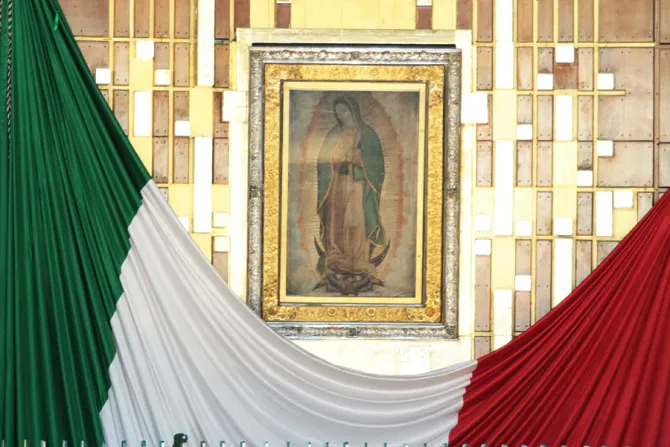Mexico City, Mexico, Feb 15, 2016 / 11:24 am
A virtual pilgrimage for Pope Francis' trip now offers a new street-view perspective of key sites and churches. The project is thanks to a partnership between the Archdiocese of Mexico and tech giant Google.
Miguel Alva, the director of marketing for Google in Mexico, explained the project.
"When we started looking at key messages from Pope Francis throughout the entire term that he's been serving, we saw a lot about opening the doors of the Church," he told CNA Feb. 13.
"So we started doing a project with street view, using street view technology to capture about 80 different churches, emblematic churches in Mexico. That includes, for the first time, the cathedral in Mexico City and also the Basilica for Our Lady of Guadalupe."
Alva has worked closely alongside the Archdiocese of Mexico to prepare for Pope Francis' Feb. 12-17 visit.
Once the Pope made the official announcement of his visit during Mass on the Dec. 12 feast of Our Lady of Guadalupe, Google immediately received a letter from Cardinal Norberto Rivera, archbishop of Mexico. The cardinal asked for help to make the visit go viral.
The archdiocese asked the tech company "for any advice that we could provide to take this entire visit to digital," Alva said. The local Church made it a priority reach a new audience, specifically the youth, "who are basically online and not necessarily on traditional media."
"So we went back and started giving some advice on their website, making it fully mobile and also including some of our platforms to make this visit better for any user," he continued.
Working on the project "has been just amazing," Alva said. The Google team was given special access to places that are normally closed to the public.
Now these places are available online to people all over the world.
This, Alva said, is "a symbol (and) a gift we want to give the Pope and people all over the world."
"If you are in bed because you are sick and you want to do a pilgrimage to Our Lady of Guadalupe, now you can do it," he said. All that's needed is to go into Google's street view of the basilica and start navigating.
Viewers can take a virtual walk through the entire complex of Tepeyac, and go straight "to the feet of the Virgin, having that moment to reflect and to pray with the Virgin."
Francis himself visited the Guadalupe shrine on Saturday. He has said many times that the primary reason he is traveling to Mexico is to visit the image of Our Lady of Guadalupe, miraculously imprinted on the tilma of St. Juan Diego 470 years ago.
Google Calendar users can schedule the Pope's entire agenda in Mexico into their own calendar. They can set reminders on their phone or computer to alert them of the activities they don't want to miss.
Additionally, Google Maps has laid out all the routes Pope Francis is set to take while on the ground. This will allow those who want to see the Pope the ability to find him. For those who want to avoid the crowds, the maps offer detour routes.
The Pope's public events are being transmitted live on YouTube, as well as on the official Spanish website of the Pope's visit.
(Story continues below)
One of the perks of the new street view tour is that pilgrims can also follow the path of participants in the Jubilee of Mercy. They can virtually pass through the Holy Doors at the entrance of the cathedral of Mexico City and the Basilica of Our Lady of Guadalupe.
Alva said that so far, Google's traffic in Spanish has jumped during the Pope's visit. Traffic increases are seen primarily in Mexico, Latin America, Spain and among Hispanics in the U.S.
"We've been monitoring the different tools and we see a high traffic. Its people who not only go in, but they also spend a lot of time," Alva said.
Normally, the average person doesn't spend long on the sites they visit. However, for the Pope's trip, the numbers have consistently been above five minutes.
While the official website for the Pope's visit is only available in Spanish, people from 123 countries have accessed it.
The main traffic comes from primarily Spanish speaking countries, or countries with a Spanish speaking population, with Mexico in the lead. This is followed by the U.S., Argentina, Spain, Colombia, Guatemala, Canada, Brazil and Italy.
Alva said that the website has also been accessed from countries such as Andorra, Azerbaijan, Japan and even the city of Macau in China.
This isn't the first time the Catholic Church – or the Vatican – have partnered with Google for a project. In fact, last year Pope Francis participated in a Feb. 5, 2015, Google Hangout session with seven special needs youth from around the world.
It marked the pontiff's second hangout session since becoming pope. His first was held with high school students in September 2014. That event helped promote the "Scholas Social" website, dedicated to raising funds for educational projects that promote interaction between schools with various social challenges.


